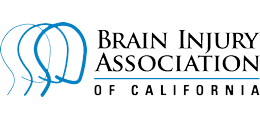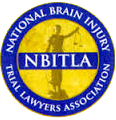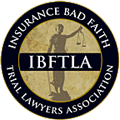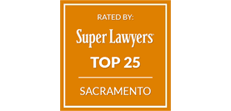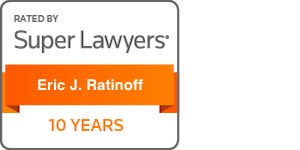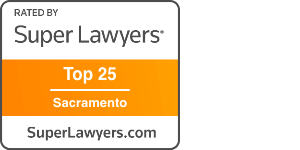How to Seek Compensation After a Hit and Run Accident in California
AAA reports that more than 700,000 hit-and-run accidents occur each year in the United States, with many resulting in injuries and fatalities. If the responsible party never comes forward, a hit- and-run accident can create significant emotional distress and leave you footing the bill for your medical expenses and car repairs. How can you receive compensation for injuries or damage to your car if the other driver decides to abandon the scene of the accident?
In California, the driver who caused the damages or bodily harm must pay for them. That covers damage to the vehicle, the other driver, lost wages, and emotional distress. California is a pure comparative negligence state, which means that each party is only liable for whatever percentage of fault they each contributed. So, when both drivers have some liability in an accident, each driver pays for their portion of damage they caused.
Unfortunately, a hit-and-run driver leaves the scene of the accident without providing identification or assistance. Some people panic and run from the accident because they don’t have a valid driver’s license or insurance. 16.6% of drivers in California are uninsured.
You would be wise to have a conversation with an experienced lawyer that understands current California laws and their impact on your case. Eric Ratinoff has represented injured Californians for over 25 years. His firm, Eric Ratinoff Law Corp. fights for the rights of those injured by someone else’s negligent or careless behavior.
What California Law Says About Hit and Run
Suppose you’ve been injured or incurred property damage over $750 after a hit and run accident in California. In that case, you have ten days to file a claim with your insurance company and the California DMV. This claim is a notification, not a criminal charge.
Under California law, running from the scene of an accident is a criminal offense. A driver is required to stop whenever there is an accident, even if the driver is not at fault or there is no damage or injury. A hit and run driver can be charged with a misdemeanor under California Vehicle Code Section 20002 if the hit and run only involves property damage. However, if the hit and run involves injury or death, the charge becomes a felony that can carry a mandatory jail sentence of up to four years and a fine of up to $10,000.
If the other driver runs after hitting your car, write down everything you can remember about the vehicle, such as the color, make, model, and license plate number. Talk to any witnesses and be sure to get their contact information. They may have seen the other driver. You’ll want to provide this information to your car accident attorney, police officers, and your insurance company.
Victims of a hit-and-run accident often suffer the pain of an injury, a damaged vehicle, and the uncertainty of who owes them compensation or if they can even collect. If you are injured, and your car receives damage in a hit-and-run, your auto insurance policy might help cover the cost of car repairs, medical bills, and other expenses involved in the accident.
What Does Liability Insurance Coverage Cover?
Suppose you carry liability coverage only. In that case, your auto insurance company will not pay for the damages to your car from a hit-and-run driver. Liability insurance only covers the costs of bodily injury or property damages of the other driver in an accident that you caused. You can’t make a claim for hit and run damages under your auto liability insurance.
Doesn’t Uninsured Motorist Coverage Cover Hit and Run Accidents?
Uninsured motorist coverage (UM) is insurance protection that covers the victim’s medical bills or the cost to repair or replace your vehicle if:
- You are in an accident in which the other driver doesn’t have insurance, or
- You are in an accident in which the other driver doesn’t have enough insurance.
In some states, drivers must purchase Uninsured motorist coverage. However, UM coverage in California is a voluntary option. California does allow drivers with UM coverage to use it to cover expenses for bodily injury from a hit and run accident. However, you cannot use UM coverage for property damage. Unfortunately, an uninsured motorist claim is filed with the at-fault party’s insurance company by your insurance company. When you don’t know who the at-fault driver was, it is difficult to determine who their insurance company is or if they have insurance.
Collision Coverage
Collision coverage pays to repair or replace your car after an at-fault accident. If you lease a vehicle or have a car loan, your lender requires you to buy collision and comprehensive insurance. However, if you own your car, you have the option to drop collision coverage. Collision coverage will not cover medical bills, but you may be able to make a claim to cover repairs for damage caused by a hit-and-run driver. You will still be required to pay the deductible.
Medical Payments Coverage
Medical payments coverage, or MedPay, is an option or a supplement to your auto insurance policy. MedPay will cover medical expenses, procedures, equipment, nursing care, and rehabilitation related to recovery from a car accident. Not all forms of injury are covered under MedPay. However, most injuries from an auto accident would be covered up to the limit of your policy. MedPay does not cover car repairs or property damage.
Speak to a Sacramento Personal Injury Lawyer
Eric Ratinoff started his firm to provide the highest quality legal services possible to those injured by someone else’s negligent or careless act. Eric brings over 25 years of legal experience to every person he represents and is listed in the National Trial Lawyers as a “Top 100 Lawyer.” If you have been a victim of a hit and run, you may be overwhelmed and need an experienced California lawyer to explain your options and examine the details of your case.
Let Eric Ratinoff Law Corp. take the fear out of the legal process. Call us at (916)-579-7658 to schedule a consultation.







